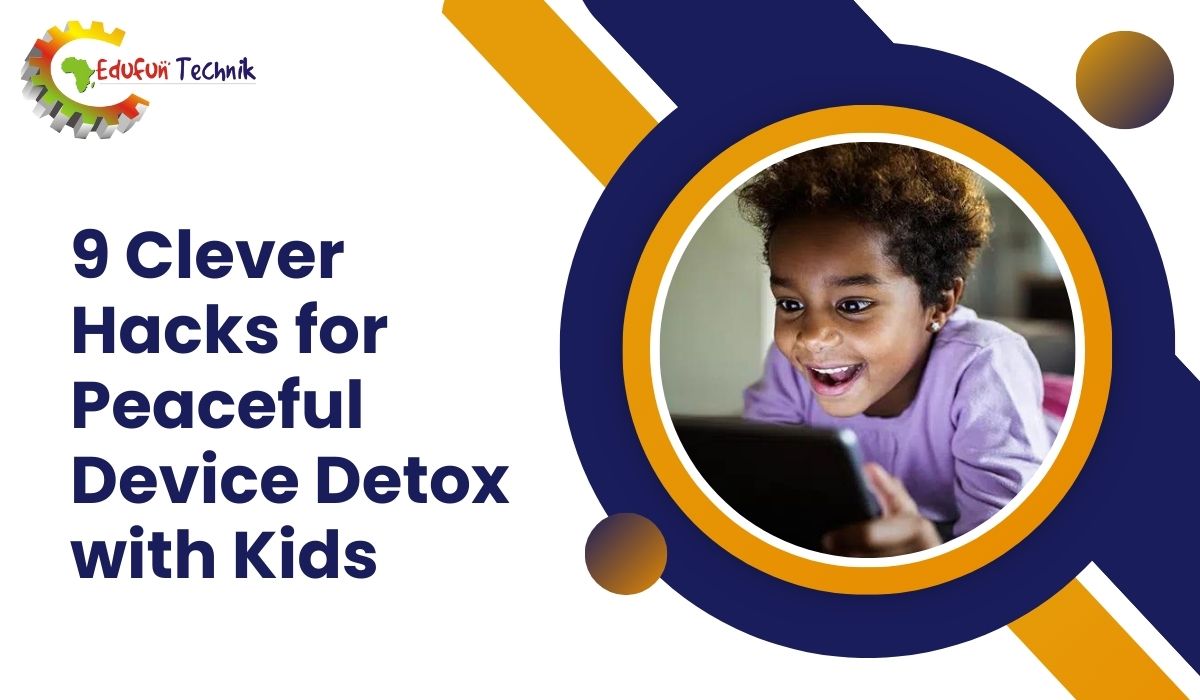As parents and educators, we understand the challenges of raising children in a world filled with digital distractions. Screens and devices have become a constant presence in our lives, and it’s not always easy to find the right balance. However, taking regular breaks from technology, or “digital detox,” can have tremendous benefits for our children’s overall well-being.
Spending too much time glued to screens can negatively impact their physical health, mental focus, and social skills. By disconnecting from the virtual world, we give our kids the opportunity to explore the real world around them, nurture their creativity, and engage in activities that truly nourish their minds and bodies.
It’s crucial to remember that childhood is a precious time for growth and discovery. By incorporating regular digital detox periods into our family routines, we create space for our children to play, imagine, and connect with the people and world around them in meaningful ways.
Set Clear Boundaries and Rules
One of the most effective ways to encourage a peaceful digital detox is to establish clear boundaries and rules around device usage from the start. Children thrive on structure and consistency, so setting reasonable limits can help them develop healthy habits.
Start by having an open conversation with your kids about the importance of balancing screen time with other activities. Involve them in the process of setting rules, such as designating specific times or days for device-free periods. This not only fosters a sense of ownership but also helps them understand the reasoning behind the boundaries.
Another helpful strategy is to create designated device-free zones within your home, such as bedrooms or dining areas. These spaces can serve as sanctuaries for quality family time, encouraging face-to-face interactions and promoting more mindful presence.
Consistency is key when enforcing these rules. By maintaining a united front as parents and educators, we can create a supportive environment that reinforces the importance of healthy digital habits.
Introduce Engaging Alternatives
One of the biggest challenges in implementing a digital detox is keeping kids engaged and entertained without their devices. The key is to introduce a variety of fun and enriching alternatives that capture their interests and imaginations.
Get them moving by encouraging outdoor activities like hiking, biking, or exploring local parks and playgrounds. Not only does this promote physical exercise, but it also allows them to connect with nature and stimulate their senses in new ways.
Tap into their creative sides by providing materials for arts and crafts projects, such as painting, drawing, or even simple DIY activities like building forts or creating homemade playdough. These hands-on activities not only foster self-expression but also help develop fine motor skills and problem-solving abilities.
Don’t underestimate the power of good old-fashioned storytelling. Encourage your kids to create their own stories, act them out, or even write and illustrate their own storybooks. You can also introduce engaging books, audiobooks, or podcasts that transport them to new worlds and spark their curiosity.
Lead by Example
As parents and educators, our actions speak louder than words when it comes to promoting healthy digital habits. Children are incredibly perceptive and tend to mirror the behaviors they observe around them. That’s why it’s crucial to lead by example and model responsible device usage ourselves.
Make a conscious effort to put away your own devices during family time or when engaging with your children. This not only demonstrates the importance of being present but also creates an environment conducive to meaningful interactions and quality bonding experiences.
Participate actively in device-free activities alongside your kids. Whether it’s a family game night, outdoor adventure, or creative pursuit, your involvement sends a powerful message about the value of these experiences.
Additionally, be mindful of your own digital habits, such as checking emails or scrolling through social media in front of your children. When they witness you prioritizing real-life connections over virtual ones, they’ll be more likely to follow suit.
Implement a Reward System
Children often respond well to reward-based systems, making a token economy an effective strategy for encouraging a peaceful digital detox. The concept is simple: reward desired behaviors, such as engaging in device-free activities or adhering to screen time limits, with tokens or points.
These tokens can then be exchanged for privileges or rewards, such as extra device time, special treats, or even small trinkets or toys. By allowing your kids to earn their way towards these incentives, you’re fostering a sense of ownership and motivation.
To make it more engaging, you can involve your children in the process of designing and decorating the tokens themselves. Whether it’s colorful popsicle sticks, craft pom-poms, or even simple paper cutouts, the act of personalization can make the system more appealing and meaningful to them.
By incorporating this token system into your digital detox routine, you’re not only encouraging positive behaviors but also teaching valuable lessons about delayed gratification, goal-setting, and the rewards of perseverance.
Schedule Tech-Free Family Time
In our busy lives, it’s easy for quality family time to get overshadowed by the constant pull of digital distractions. That’s why intentionally scheduling regular tech-free periods can be a powerful way to reconnect and create cherished memories together.
Set aside specific days or evenings each week where all devices are put away, and the focus is solely on enjoying each other’s company. This could be as simple as a family game night, a picnic in the park, or even a cozy movie night with no phones or tablets allowed.
Involve your children in the planning process, allowing them to suggest activities and outings that align with their interests. Whether it’s exploring a local museum, trying a new recipe together, or embarking on a nature scavenger hunt, the key is to find activities that foster engagement, curiosity, and shared experiences.
To make these tech-free periods even more special, consider incorporating fun traditions or rituals. This could be anything from sharing gratitude moments to creating themed dress-up nights or hosting backyard camping adventures.
Encourage Reading and Storytelling
The art of reading and storytelling can be a powerful antidote to excessive device usage. Not only do these activities promote literacy and language development, but they also ignite imagination, creativity, and a love for learning.
Introduce your children to a diverse array of books, from classic tales to contemporary stories that reflect their interests and experiences. Make reading a cherished family ritual by setting aside dedicated reading times, whether it’s before bedtime or during cozy afternoon sessions.
Engage your kids in the process by allowing them to select books or stories that pique their curiosity. You can even create a family book club, where you take turns choosing titles and discussing them together, fostering critical thinking and comprehension skills.
Storytelling is another powerful tool for nurturing creativity and bonding. Encourage your children to craft their own narratives, either through oral storytelling sessions or by writing and illustrating their own storybooks. You can even make it a collaborative effort by taking turns adding elements to a shared tale.
Involve Children in Household Chores
While household chores may not seem like the most exciting alternative to screen time, they can actually be a fantastic opportunity for device-free bonding and skill-building. By involving your children in age-appropriate tasks and responsibilities, you’re fostering a sense of contribution, responsibility, and teamwork.
Start by creating a chore chart or rotation system that assigns specific duties to each family member. This not only instills a sense of ownership but also encourages cooperation and accountability. Be sure to tailor the tasks to your children’s abilities, making them challenging enough to engage their interest while still being achievable.
Turn these chores into quality time together by working alongside your kids, sharing stories, and even injecting a bit of fun and friendly competition. Whether it’s seeing who can fold laundry the fastest or turning cleaning into a dance party, the key is to make the experience enjoyable and engaging.
Promote Mindfulness and Relaxation
In our fast-paced world, it’s essential to encourage children to slow down, be present, and practice mindfulness. Incorporating relaxation techniques into your digital detox routine can not only promote peace and calm but also help manage stress and anxiety.
Start by introducing simple meditation or deep breathing exercises, tailored to your children’s age and attention span. Guide them through visualizations or body scans, encouraging them to focus on their senses and the present moment. You can even make it a fun family activity by incorporating elements of yoga, stretching, or gentle movements.
Journaling can also be a powerful tool for self-expression and emotional regulation. Provide your kids with blank notebooks or journals and encourage them to write about their thoughts, feelings, or even creative stories. This not only fosters mindfulness but also helps develop writing and communication skills.
Seek Support and Accountability
Implementing a successful digital detox routine can be challenging, especially when navigating the ever-present temptations of technology. That’s why seeking support and accountability from others can be a game-changer in staying on track and maintaining a peaceful, balanced approach.
Connect with other parents or educators who share your commitment to promoting healthy digital habits. Form a supportive community where you can share strategies, offer encouragement, and hold each other accountable. This could be as simple as a group chat, regular meetups, or even a dedicated online forum.
Within this community, you can exchange tips, troubleshoot challenges, and celebrate successes together. Knowing that you’re not alone in this journey can provide a much-needed sense of camaraderie and motivation.
Additionally, consider involving your children’s teachers or caregivers in your digital detox efforts. By fostering open communication and aligning your approaches, you can create a consistent and supportive environment that reinforces healthy habits both at home and in other settings.
Navigating the digital landscape with your children can be a delicate balancing act, but incorporating regular device detox periods is essential for their overall well-being. By implementing these hacks, you’ll not only foster a peaceful environment but also create lasting memories and strengthen your family bond.
Remember, the key is to approach this process with patience and understanding. Every family is unique, and it may take some trial and error to find the strategies that work best for your circumstances. Celebrate small victories, learn from setbacks, and remain consistent in your efforts.
Most importantly, embrace the journey together. Involve your children in the process, listen to their perspectives, and make it a collaborative endeavor. When they feel heard and empowered, they’ll be more likely to embrace the digital detox wholeheartedly.







